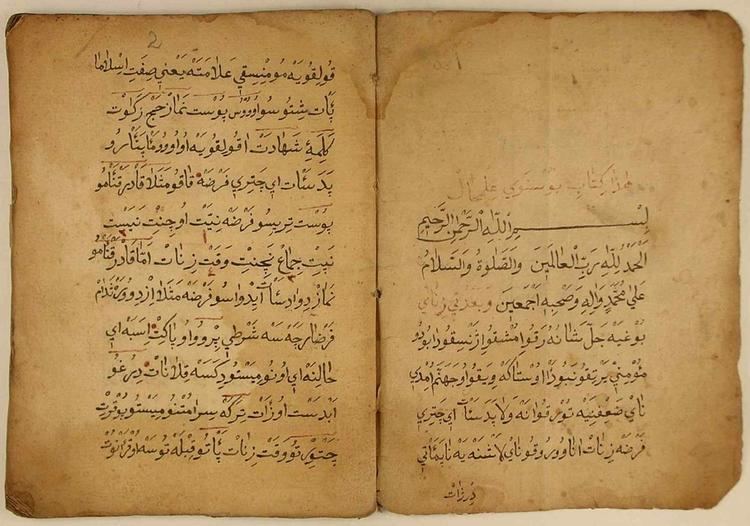 | ||
Arebica or Arabica (عَرَبٖىڄا) was a Bosniak variant of the Perso-Arabic script used to write the Bosnian language (بۉسانسقٖى يەزٖىق). It was used mainly between the 15th and 19th centuries and is frequently categorized as part of Aljamiado literature. Before World War I there were unsuccessful efforts by Bosnian Muslims to adopt Arebica as the third official alphabet for Bosnian alongside Latin and Cyrillic.
Contents
Apart from literature, Arabica was used in religious schools and administration, though in much less use than other scripts.
Origin
Arebica was based on the Perso-Arabic script of the Ottoman Empire, with added letters for /t͡s/, /ʎ/, and /ɲ/, which are not found in Arabic, Persian, or Turkish. Full letters were eventually introduced for all vowels (as with Kurdish Arabic script), making Arebica a true alphabet, unlike its Perso-Arabic base.
Contemporary use
The first literary work to be published in Arebica for 64 years (since 1941) was a comic book "Hadži Šefko i hadži Mefko" in 2005 (authors Amir Al-Zubi and Meliha Čičak-Al-Zubi). The authors made slight modifications to Arebica.
The first book in Arebica with an ISBN was "Epohe fonetske misli kod Arapa i arebica" ("The Age of Phonetic Thought of Arabs and Arebica") in April 2013 in Belgrade by mr. Aldin ef. Mustafić. This book represents the completion of the standardization of Čaušević's version, and is also a textbook for higher education.
Alphabet
The final version of Arebica was devised by Mehmed Džemaludin Čaušević at the end of the 19th century. His version is called Matufovica, Matufovača, or Mektebica.
Notes
Ligatures
Like the standard Arabic alphabet, when ا connects to either ل or ڵ a special ligature is used instead.
